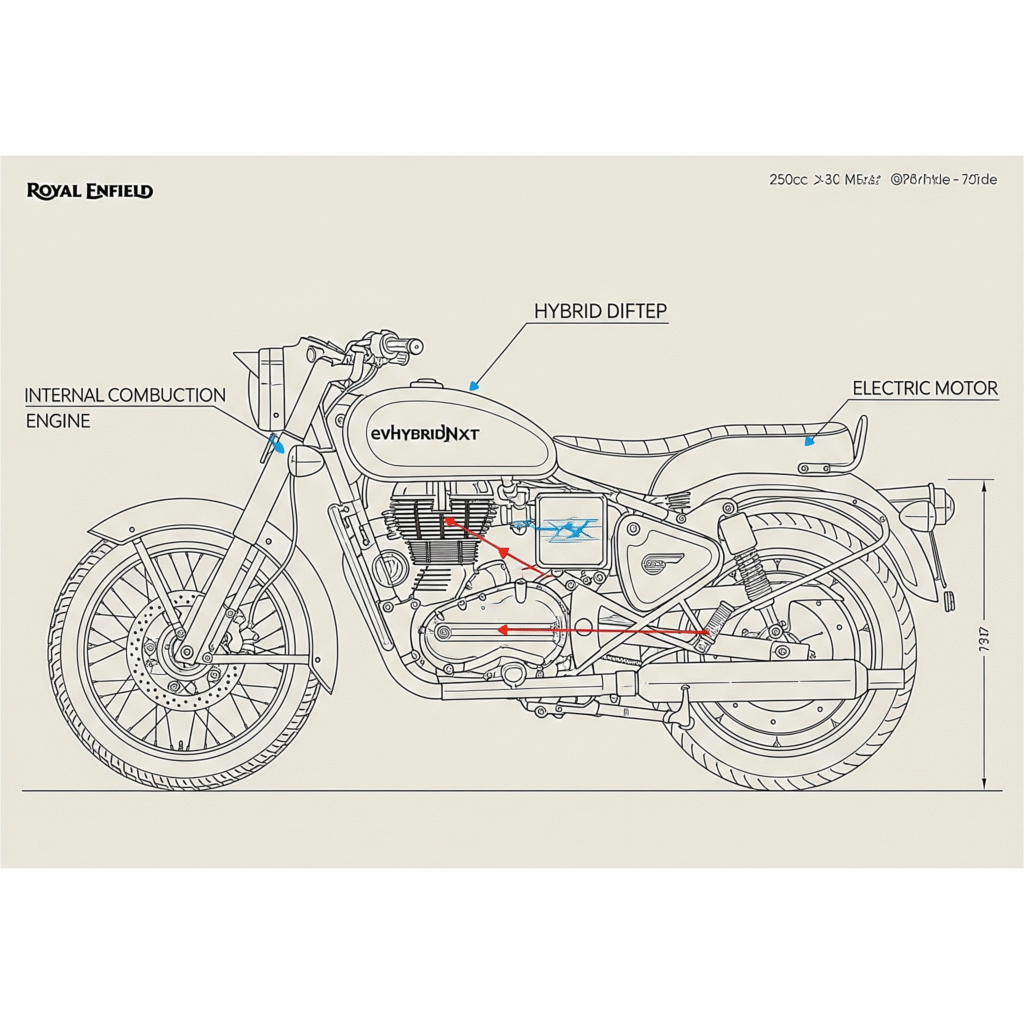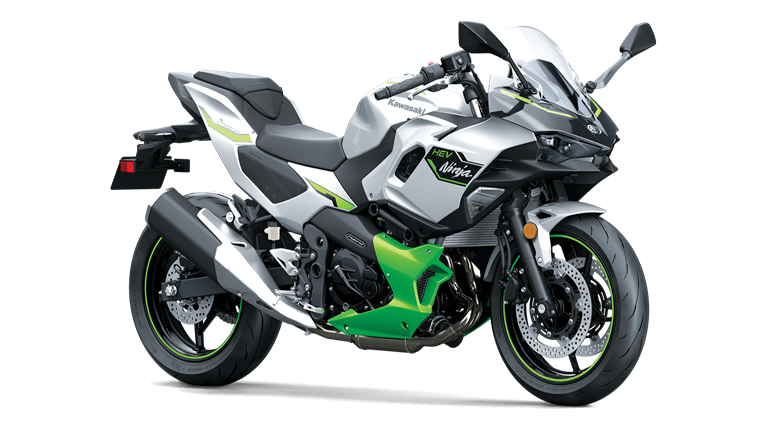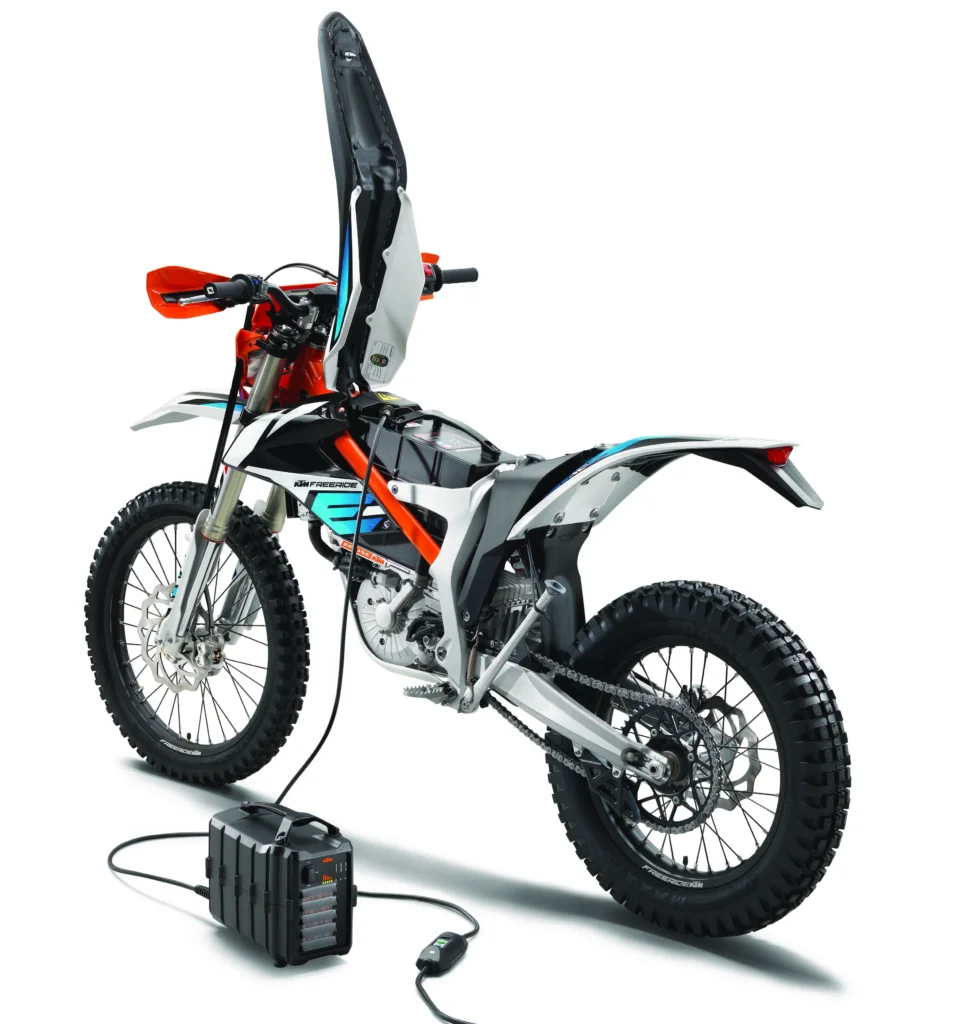Royal Enfield, the iconic Indian motorcycle brand renowned for its retro-styled cruisers and thumpers, is reportedly gearing up to enter the 250cc segment with a hybrid-powered motorcycle. This new model, built on a dedicated platform codenamed ‘V’, marks a strategic shift for the company as it aims to capture first-time premium buyers while complying with evolving emission and fuel efficiency norms. In advanced talks with China-based CFMoto—a global leader in midsize engine development—Royal Enfield plans to license a compact, hybrid-ready 250cc engine. The bike is expected to deliver over 50 kmpl mileage, positioning it as an efficient, affordable alternative in a market dominated by 100-150cc commuters.
With a projected launch by late 2026, this could become Royal Enfield’s most accessible offering, undercutting the current entry-level Hunter 350. As of September 2025, the partnership is still in negotiation, with a final decision anticipated in the first half of FY2026. This development aligns with Royal Enfield’s ambition to double production to 2 million units annually by 2030, blending tradition with modern tech.
The move comes amid tightening regulations: the engine will meet BS6 Phase II standards (effective since April 2023) and prepare for the upcoming Corporate Average Fuel Efficiency (CAFE) norms in 2027, which mandate fleet-wide improvements in mileage. Hybrids offer a practical bridge between petrol powertrains and full EVs, especially for Royal Enfield’s audience that values rideability over full electrification. Drawing from recent reports, here’s a detailed look at the upcoming 250cc hybrid, its tech, pricing, and market impact.
At the core of the ‘V’ platform is a 250cc single-cylinder engine licensed from CFMoto, engineered for hybrid adaptability without major redesigns. While exact specs remain under wraps, sources indicate a compact, fuel-efficient unit delivering around 40-45 kmpl in pure ICE mode, potentially boosting to 50-55 kmpl with mild-hybrid tech.
The hybrid system could include a 48-volt starter-generator for torque assist during acceleration, regenerative braking, and auto start-stop functionality—similar to Yamaha’s FZ-S Fi Hybrid but tailored for Royal Enfield’s character.
Power output is estimated at 20-25 bhp and 20-22 Nm torque, prioritizing low-end grunt for city rides over high-rev thrills. This setup ensures compliance with BS6 Phase II’s On-Board Diagnostics (OBD-2B) requirements and CAFE’s fleet-average efficiency targets, avoiding hefty penalties for non-compliant models. Unlike full EVs, the hybrid approach keeps weight manageable (under 150 kg kerb), preserving the agile handling Royal Enfield enthusiasts love. Production will occur at the Chennai plant, with 85-90% localization to control costs and support exports.
No joint venture is planned; CFMoto’s role is purely technical, allowing Royal Enfield to retain full control over integration.
True to Royal Enfield’s DNA, the 250cc hybrid will feature classic retro styling: a round headlamp, teardrop fuel tank, and spoked or alloy wheels, available in roadster (Hunter-like aggressive stance) or classic variants.
The chassis will be a double-cradle steel frame with telescopic forks upfront and twin gas-charged shocks at the rear, offering a seat height around 790-800 mm for accessibility. Braking duties fall to disc setups at both ends with dual-channel ABS, while LED lighting and a semi-digital instrument cluster (with Bluetooth connectivity for navigation and calls) add modern touches.
Hybrid-specific features may include a small battery pack under the seat for electric assist in traffic, potentially enabling short EV-only modes for urban emission zones. Ground clearance is expected at 170-180 mm, balancing city prowess with light off-road capability. Overall, it promises the “thump” of a refined single-cylinder with hybrid smoothness, weighing in at 140-145 kg—lighter than the 181 kg Hunter 350.
Slated as the brand’s new entry-level model, the 250cc hybrid is projected to start at ₹1.25-1.35 lakh (ex-showroom), undercutting the Hunter 350’s ₹1.49 lakh base price.
This aggressive pricing targets budget-conscious upgraders from 100-150cc bikes like the Honda Shine or Bajaj Pulsar NS160, while appealing to young urban riders seeking style and efficiency. Launch is eyed for late 2026 or early 2027, following finalization of the CFMoto deal and extensive testing.
Initial rollout will focus on India, with exports to Southeast Asia and Europe where A2 license norms favor sub-300cc bikes.
Rivals: Positioning in a Competitive Entry-Premium ArenaThe 250cc hybrid enters a crowded segment where efficiency and features are key. It will challenge sporty commuters and retro rivals, offering superior mileage and brand prestige. Here’s a comparison based on current/expected specs (top variants, ex-showroom prices):
| Parameter | Royal Enfield 250cc Hybrid (Expected) | TVS Ronin 225 | Yamaha FZ-S Fi Hybrid 149 | Bajaj Pulsar NS200 |
|---|---|---|---|---|
| Price | ₹1.25-1.35 lakh | ₹1.73 lakh | ₹1.35 lakh | ₹1.47 lakh |
| Engine/Power | 250cc Hybrid; 20-25 bhp/20-22 Nm | 225cc; 20 bhp/19.93 Nm | 149cc Hybrid; 12 bhp/13 Nm | 199cc; 24 bhp/18 Nm |
| Mileage (Claimed) | 50+ kmpl | 42 kmpl | 58 kmpl | 40 kmpl |
| Weight | 140-145 kg | 159 kg | 139 kg | 156 kg |
| Features | ABS, LED, Bluetooth, Hybrid Assist | ABS, USD Forks, TFT | ABS, Hybrid Start-Stop | ABS, Digital Cluster |
| Styling | Retro Roadster/Classic | Scrambler | Naked Sporty | Naked Aggressive |
Verdict: The RE 250cc stands out with its hybrid efficiency and retro appeal, potentially outshining the Ronin’s scrambler vibe or FZ’s commuter focus in premium feel.
Against the NS200’s performance edge, RE’s mileage and lower price could win urban users. It also differentiates from pure EVs like the Ola S1 or Ather 450 by offering longer range without charging anxiety.
Royal Enfield’s foray into hybrids via CFMoto isn’t just about compliance—it’s a savvy response to rising fuel costs, urban congestion, and global sustainability trends. With India’s two-wheeler market projected to grow 8-10% annually, the entry-premium segment (200-300cc) is ripe for disruption, especially as CAFE norms push for greener fleets.
This bike could attract 20-30% more first-time buyers, boosting volumes while complementing upcoming models like the 750cc twins and EV Flying Flea (Q1 2026). Critics may question the Chinese tie-up, but precedents like Bajaj-KTM show such collaborations enhance competitiveness without diluting brand identity.



